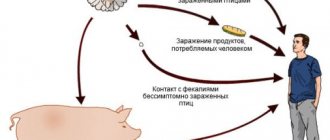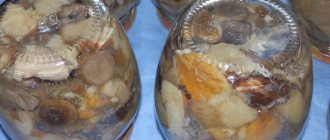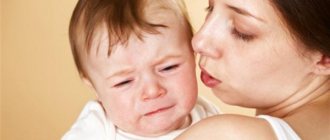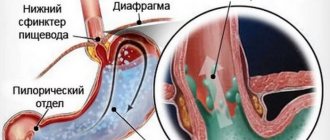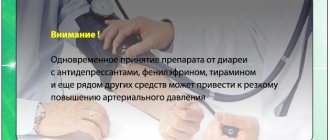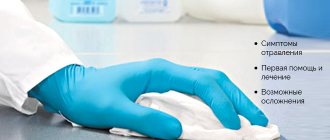Salmonellosis is an infection caused by Salmonella bacteria.
Salmonella live primarily in the intestines, but, excreted in feces, they can be viable for a long time in the external environment and food, thus being transmitted to animals and humans. Most people develop diarrhea, fever, vomiting, and abdominal cramps within 6 to 72 hours of being infected with salmonella. The disease lasts from 4-7 days and most patients recover without treatment. But sometimes, due to diarrhea, the human body loses a large amount of fluid, which is life-threatening. Such patients must be hospitalized. During treatment, medications are used to provide symptomatic relief, for example, reducing temperature, eliminating dehydration and dysbiosis.
In severe cases, the infection spreads from the intestines to the circulatory system and other areas of the body. This disease is known as typhoid fever and is treated with antibiotics. Typhoid fever is more common among older adults, young children, and people with weakened immune systems. Typhoid fever is common in developing countries. In developed countries, most cases of typhoid fever have been reported after travel to disadvantaged regions.
To understand what salmonellosis is and how to treat it, you need to know not only what causes the infection, but also where it enters the body.
The causative agent of salmonellosis
This acute infectious disease is caused by a rod-shaped bacterium. It is salmonella that causes the symptoms typical of this disease.
The severity of the disease depends on the type of bacteria: in total there are more than two thousand of them; in Russia there are about 500 varieties of salmonella that are dangerous to humans and animals.
These bacteria are almost impervious to environmental conditions and can remain active for more than six months even in sea water, and in soil and indoor dust for up to one and a half years.
As soon as salmonella enter a favorable environment, they immediately begin to actively multiply. The only way to kill salmonella is to disinfect foods or thoroughly heat them.
Sources
Salmonellosis can be contracted through food that has been spoiled or has not undergone proper heat treatment. In most cases, this is food of animal origin. The only exception is quail eggs. They are safe because the pathogen cannot penetrate through their shell.
Infection also occurs through contact with pets. Few people know that they suffer from this pathology without obvious symptoms. Another way to get salmonellosis is to swim in a dirty pond. The risk increases significantly when drinking untreated or unboiled water.
The disease is easily transmitted from an infected person to a healthy person. Outbreaks of salmonellosis often occur in schools, kindergartens, and canteens. One sick employee can infect both his colleagues and those who eat the food he prepares.
The employee may not have external signs of pathology, but the pathogen lives and multiplies in his body. In this situation, the person is considered a carrier. Therefore, people who work in catering establishments and with children are required to undergo a full medical examination annually.
If a pregnant woman gets sick with salmonellosis, it is possible that it will be passed on to the child. It is possible to get sick through everyday contact: through bedding, toys, dishes, and so on. Cases of infection increase during the warmer months.
Salmonellosis can be eliminated with effective treatment, but in the absence of such treatment, death is possible, especially in childhood.
Routes of infection
The primary source for this infection is cattle, pigs, sheep, horses, and poultry.
They themselves are asymptomatic, but the pathogen is contained in their biological secretions: urine, saliva, feces, even in milk. When servicing animals, transporting and processing carcasses, there is a high probability of human infection.
Very often, human infection occurs through chicken eggs, or more precisely, through fragments of chicken feces contained on their surface. There are especially many cases of salmonellosis in the summer, since warm weather favors the rapid growth of bacteria in the nutrient medium.
It’s not for nothing that salmonellosis is called the most dangerous summer disease.
The disease is transmitted between people through dirty hands; other routes of infection, including household ones, are practically not dangerous to humans.
Answers to frequently asked questions
- Does salmonellosis occur in quail eggs? The body temperature of quails is about 40 ºC - it is believed that it is detrimental to salmonella. And the pore diameter of a quail egg is much smaller, which traps common bacteria. But there are certain types of infectious agents that can survive at temperatures of 45 ºC, and their size is slightly smaller. Therefore, infection is quite possible. But as a rule, these birds are kept in better conditions, paying more attention to hygiene. In this regard, the incidence of salmonellosis infection after eating quail eggs is much lower.
- Is salmonellosis transmitted from person to person? - yes, this is possible. Firstly, in the case of bacterial carriage, a person poses a certain threat to others. It is a source of infection. If he works in the food industry and his profession is related to food preparation, he can infect the people around him. Secondly, if there is a sick person in the house with an acute form of salmonellosis, he poses a danger only when basic hygiene rules are not followed in the house and routine cleaning of the premises is not carried out.
- How to treat eggs against salmonellosis? To begin with, you can reduce the amount of salmonella on the egg shell - that is, wash it before eating. It does not matter whether the egg is cooked whole or whether it is included in the dish raw. In addition, all products potentially contaminated with salmonellosis need to be cooked for a long time. At a temperature of 100 ºC, salmonella die within three minutes. That is, it is advisable to boil the eggs all this time.
- Why is salmonellosis often transmitted through chicken eggs? Birds are often infected, but salmonella does not always harm them. Quite healthy bacterial carriage is observed. At the same time, in the intestines of birds there is a huge amount of bacteria, which are regularly released into the external environment through feces. Before being released, the egg becomes infected. In addition, inside the egg itself, the white may already be contaminated. Therefore, doctors recommend purchasing fresh eggs (they are less likely to be damaged by bacteria) and it is better to buy them in stores rather than at a spontaneous market.
Salmonellosis ranks first in the world among deaths from intestinal infectious diseases. And the number of new species of salmonella is increasing every year. It is impossible to eradicate the pathogen. What can you do to avoid getting sick? It is necessary to prepare food correctly, regularly observe basic hygiene rules, and teach children how to handle even exotic species of animals.
Incubation period
Once in the human body, salmonella can manifest itself either after a few hours (6 or more) or up to 3 days - this is the incubation period of salmonellosis. During this time, the bacteria need to overcome the acidic environment of the stomach and enter the small intestine. From this moment on, the symptoms of the disease begin to increase.
Salmonella waste products begin to enter the human blood and it carries toxins throughout the body, causing both intestinal symptoms and disturbances in the functioning of the nervous system.
Because salmonellosis has such a long incubation period, doctors often cannot distinguish it from food poisoning.
Even in the absence of signs of illness, a person becomes a carrier of the infection and can be dangerous to others. Therefore, it is important to always comply with sanitary and hygienic standards, because the asymptomatic form of salmonellosis is also dangerous for others.
Prevention
In order to prevent the appearance of symptoms of salmonellosis, you must adhere to the following recommendations:
- eat properly thermally prepared food;
- refuse products with an unclear expiration date;
- observe the rules of personal hygiene;
- avoid contact with the sick person.
There are no specific measures to prevent salmonellosis, and emergency measures are carried out in case of outbreaks of Salmonella Bacteriophage.
General symptoms
Signs of the disease vary depending on what form of salmonellosis a person has, but almost always the disease occurs as follows:
- a rapid rise in temperature to 39C or more, accompanied by general malaise, as well as headache and dizziness;
- pain in the gastric region, which quickly leads to vomiting with food fragments;
- after evacuation of the stomach contents, the vomit becomes mucous;
- diarrhea with characteristic foamy and watery greenish stools, feces containing mucus;
- the liver area is enlarged.
These are the first signs of salmonellosis.
Depending on the type of pathogen, the disease can take the following forms:
- gastrointestinal form: its symptoms are described above, it is the most common;
- typhoid form: manifests similarly, but gradually the symptoms increase - the fever lasts for a week, intoxication does not decrease, the patient’s consciousness is confused, by the end of the first week a typhoid-like rash appears, which gradually disappears over a few days;
- septic form: observed very rarely, typical only for the elderly, newborns and people with weakened immune systems. The disease is severe, from the first days the condition of patients worsens until it becomes critical.
- asymptomatic form: so-called bacterial carriage. There are no clinical symptoms of the disease, but tests reveal Salmonella.
Pathological anatomy
The degree of pathological changes in salmonellosis does not correspond to the severity of the disease. Anatomical changes depend on the time of death. In patients who died in the first 3-4 days from the onset of the disease, swelling and hyperemia of the mucous membrane of the stomach and intestines, hemorrhages in places, and sometimes an increase in solitary follicles are observed. Necrotic foci are found in the liver, the spleen is enlarged and flabby. The lungs are swollen, the heart muscle is pale and easily tears. When death occurs at a later date, ulcerations of the gastric wall and ecchymosis are detected.
First aid: treat correctly
Treatment of salmonellosis is aimed primarily at combating dehydration and eliminating toxins.
In case of a mild form of the disease, it is necessary to: rinse the stomach with a weak solution of soda or potassium permanganate. To do this, you need to drink one or two glasses of the solution and provoke vomiting, irritating the root of the tongue with a spatula or the back of a tablespoon.
Additionally, you can use a cleansing enema, which will remove the bulk of bacteria directly from the intestines. Drink plenty of fluids to prevent dehydration and remove toxins.
Since a patient who is dehydrated loses not only water, but also salts that are needed for the body to function properly, drinking plain water is not enough for treatment!
The best choice in this case is to use special saline solutions (Regidron). If water is not retained in the body, but provokes vomiting, then you need to drink little by little, but very often - several tablespoons of liquid every five minutes.
Instead of rehydron, you can drink a salt solution, which includes a teaspoon of salt and half a teaspoon of soda per liter of water. the use of a variety of sorbents (starting with simple activated carbon) will significantly reduce the time for symptoms of salmonellosis to appear;
Additionally, antidiarrheal therapy can be started. follow a special diet. Its main task is to minimize any impact on the intestinal mucosa injured by inflammation.
It is recommended to reduce the amount of fats and carbohydrates to a minimum, leaving the usual amount of proteins in the diet. All food should be steamed or boiled and pureed using a blender;
As additional measures, it is allowed to brew herbs: in the first days - antidiarrheal infusions (oak bark, walnuts), in subsequent days - anti-inflammatory herbs (chamomile, mint).
Pay special attention! At the slightest suspicion of salmonellosis in children aged 3 years or younger, any self-medication is prohibited!
You must immediately contact an infectious disease specialist or call an ambulance. Any form of salmonellosis at this age is a direct indication for immediate hospitalization.
Treating salmonella food poisoning at home
If the infection is quite mild and the patient is prescribed treatment at home, it is worth knowing how to treat salmonellosis in adults and what is not. When treating salmonella infection at home, the following methods are used:
- In the first days of illness, bed rest is observed.
- For minor dehydration, use oral rehydration mixtures or warm weak tea, decoctions of dried apples, raisins, rose hips, blueberries, St. John's wort, mint, lemon balm, anise, caraway. After consulting a doctor, you can drink fresh natural juices and mineral water. Typically, 2.5 to 4 liters of liquid are required per day.
- The first 1-2 days – adherence to diet No. 4 according to Pevzner. The following days - diet No. 2 according to Pevzner. The diet must be followed for at least one month.
- For the first 3-5 days, enterosorbents are used, which are prescribed by the doctor.
Treatment for salmonellosis at home should be prescribed and carried out strictly as prescribed by the doctor. When prescribing antibiotics, you cannot independently adjust their dose. Self-medication can complicate the course of salmonellosis.
Treatment with folk remedies without consulting a doctor and conducting laboratory tests is not able to provide the necessary effect, especially in the acute period. However, after overcoming the acute period, medical therapy can and should be supplemented with herbal decoctions.
What not to eat if you have salmonellosis
You should completely exclude from your diet foods that cause fermentation in the intestines. These are, first of all, milk, vegetables with coarse fiber that have not undergone heat treatment, and some fruits (among them citrus fruits, plums, grapes, pears).
Of course, we will not allow any fast food, herbs and spices, sweets, or baked goods. Cocoa, coffee, and soda should be excluded from drinks. Ideally, you should drink only rehydron solution or clean still water.
Etiology
The causative agents of Salmonellosis are microorganisms belonging to the genus Salmonella of the intestinal family (Enterobacteriaceae) of the tribe Escherichieae. Known approx. 2000 serological types (variants) of Salmonella, differing in antigenic properties (see Salmonella); More than 700 serotypes have been isolated from humans. Salmonella are characterized by pronounced polypathogenicity, i.e., the ability to cause diseases in both various animals and humans.
Diseases caused by salmonella such as S. typhi, S. paratyphi A, S. schottmuelleri, S. hirsch-feldii, are identified as independent nosological forms (see Typhoid fever, Paratyphoid fever).
In our country, the most often isolated from people sick with S. are S. typhimurium, S. virchov, S. infantis, S. bovis-morbificans, S. anatum, S. haifa, S. enteritidis, etc.
Is it necessary to see a doctor?
All recommendations in this section apply to adults only. Children with suspected salmonellosis must see a doctor!
In many cases, adults can do without a doctor and without hospital treatment. If the symptoms of salmonellosis decrease with an appropriate diet and therapeutic measures, then the body copes with the disease itself.
However, if you are concerned about repeated vomiting and incessant diarrhea, then you need to go to the infectious diseases emergency department. In this case, you will most likely have to undergo treatment in a hospital: such severe dehydration cannot be dealt with at home; droppers are needed.
It is also necessary to contact a specialist if you suspect you have a typhoid (septic) form of salmonellosis, which cannot be cured outside a hospital setting.
Please note: for the gastrointestinal form, antibiotics are contraindicated! Do not self-prescribe medications!
In addition, most salmonella species do not respond to antibiotics, which is why they are not often used in complex therapy.
Possible complications
The consequences and complications of salmonellosis are very diverse. Of particular danger are:
- development of vascular collapse with the formation of renal and heart failure,
- complications of the septic type with the formation of foci of infection outside the intestine (as a result, appendicitis, pneumonia, osteomyelitis, arthritis, abscesses in various organs can develop),
- the formation of a carrier state that poses a danger to surrounding people due to the high risk of infection.
Even if the pathology was mild, the patient is recommended to undergo a full recovery, since salmonellosis leads to a severe weakening of the immune system and the formation of asthenia.
How to confirm the diagnosis
Despite the well-described signs of salmonellosis, it is impossible to determine it at home. Moreover, no doctor can diagnose you without conducting clinical studies. To do this, you need to take tests of stool, vomit, and urine.
Remains of food eaten by the sick person are also taken for examination. However, due to the length of the incubation period, this is not always possible.
A bacteriological study inoculates those groups of bacteria that are contained in the material samples, so the most indicative and reliable tests will be those taken in the first days of the disease. The infectious disease salmonellosis is best determined by examining stool.
Diagnostics
The diagnosis of salmonellosis is based primarily on clinical data, the epidemiological situation and the exclusion of similar diseases. The role of laboratory tests is very great, but the positive results of these studies, due to the characteristics of the pathogenesis, do not have absolute and decisive significance for the diagnosis.
Of course, in all suspicious cases it is considered obligatory to carry out bacteriological and serological studies in the most complete and detailed manner, and, where possible, to subject the suspicious food products consumed by the patient to bacteriological examination. Both during mass outbreaks and in individual sporadic cases, poisoning by chemicals (arsenic, sublimate) and mushrooms that have entered the food must first be excluded.
In severe cases, cholera should be excluded. With cholera that begins acutely, the temperature remains normal, there is no nausea, the stomach is almost not swollen, and watery stools do not have that fetid odor that is so characteristic of salmonellosis. In case of salmonellosis, it is necessary, along with testing for salmonella, to culture feces in peptone water (bacteriological testing for Vibrio cholerae). In some cases, food idiosyncrasies (crayfish, strawberries, eggs) and attacks of acute cholecystitis should be kept in mind. Salmonellosis almost always has to be differentiated from dysentery, since in some cases dysentery begins with symptoms of enteritis or gastroenteritis.
Dynamic observation of the course of the disease helps to make a true diagnosis: in cases of dysenteric lesions, after a few days, the symptoms of enteritis are supplemented by symptoms of colitis, established clinically and by sigmoidoscopy, and a slow rate of convalescence. Particular caution in making a diagnosis requires those cases when, with symptoms of obvious colitis, a Salmonella pathogen is detected during bacteriological examination. Such cases should be considered not as dysentery-like forms of salmonellosis, but either as a mixed infection (dysentery and salmonella bacteria carriage), or as a phenomenon of salmonella nosoparasitism with dysentery lesions.
The presence of a dysentery infection can be proven by repeated bacteriological and serological studies, as well as by the reaction of increasing bacteriophage titer, which make it possible to recognize the participation of a dysentery pathogen in the pathological process.
After excluding these diseases, during further differential diagnosis, one should keep in mind the possibility of food toxic infections caused by eating contaminated food with large quantities of B. coli communis, B. paracoli, B. Proteus, as well as enterocolitis caused by toxic staphylococcus. Toxic infections caused by these microbes occur in separate outbreaks that involve individuals who have consumed the same food product; sporadic cases of the disease, especially throughout the season, are usually not observed. When carrying out a differential diagnosis, it is impossible to do without bacteriological and serological studies.
As for the differential diagnosis with enteritis caused by toxic staphylococcus, it is characterized by an epidemiological history that reveals the fact of eating foods contaminated by persons suffering from purulent diseases. Clinically, the diseases are accompanied by high fever, agitation, vomiting, rapid and weak pulse, and a tendency to collapse. The phenomena of enteritis itself, very short-term, are observed only in a very small part of the sick. The disease lasts from several hours to 1-2 days.
Recognizing a localized form of salmonellosis often requires excluding myocardial infarction, in which a sudden illness after eating can be accompanied by vomiting, pain in the epigastric region, even diarrhea and acute cardiac weakness. It must be borne in mind that with salmonellosis, pain in the abdominal area is never intense. In addition, during a heart attack they are usually localized in the upper abdomen, under the xiphoid process, and have a typical irradiation to the “northeast”. Diarrhea is not the leading symptom. It is also important to indicate the presence of pain in the heart area during attacks recently before the disease. Until a heart attack is ruled out, any gastric lavage is contraindicated.
How dangerous is salmonellosis?
The degree of its danger depends, as you already understood, on the type of disease occurring and on the age of the patient. There is also a high probability of complications in the absence of proper treatment.
Among the most severe consequences: the likelihood of death in typhoid and septic variants of the disease, meningitis and pneumonia, toxic shock and infectious psychosis, disruption of the nervous system, heart failure.
Even with complete recovery, unpleasant consequences can haunt a person for a long time.
They require long-term observation and, possibly, treatment: a violation of the intestinal microflora, it requires the use of enzyme preparations, dysbiosis after the end of the acute period of the disease (prebiotics are restored), during treatment and 30 days after recovery it is necessary to follow a diet.
The consequences of salmonellosis are especially severe in children of preschool and school age. The disease necessarily manifests itself after recovery as chronic inflammatory processes in the gastrointestinal tract.
A specialized diet prescribed by a doctor must be followed for at least three months after the end of the acute period.
Epidemiology
The source of infection is livestock, poultry, and rarely humans. The mechanism of spread of salmonellosis is fecal-oral. The carrier of the disease can be a carrier of the pathogen (the disease does not manifest itself in him). Transmitted in the following ways:
- food - when consuming meat, eggs, milk with salmonella;
- contact-household - when using household items of an infected person, when shaking hands with him;
- aqueous - when consuming raw water.
Children are more susceptible to developing salmonellosis. Moreover, the infection is more often diagnosed in newborns; their incidence is 10 times higher than in children who already go to school and adults. The disease is especially difficult for infants and the elderly.
